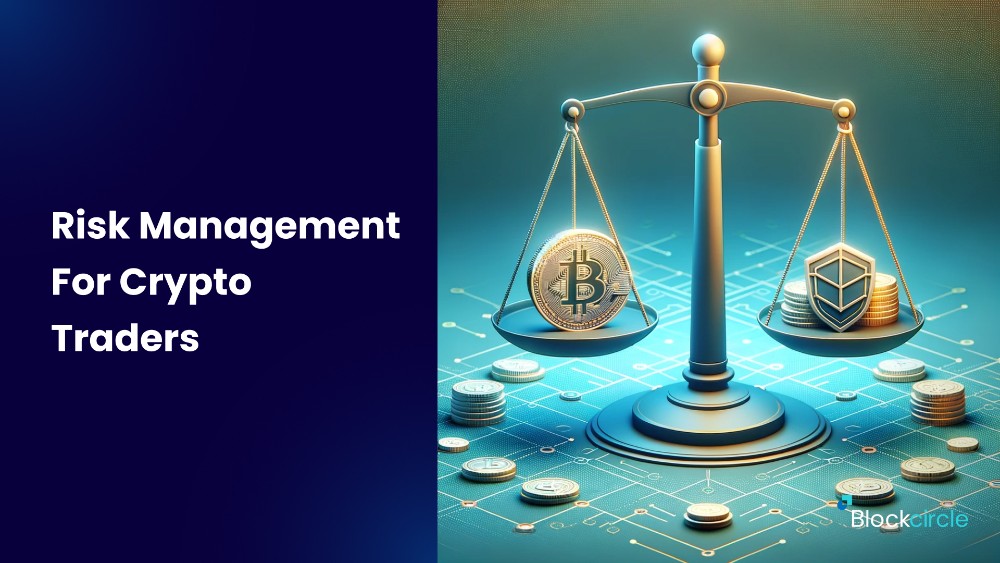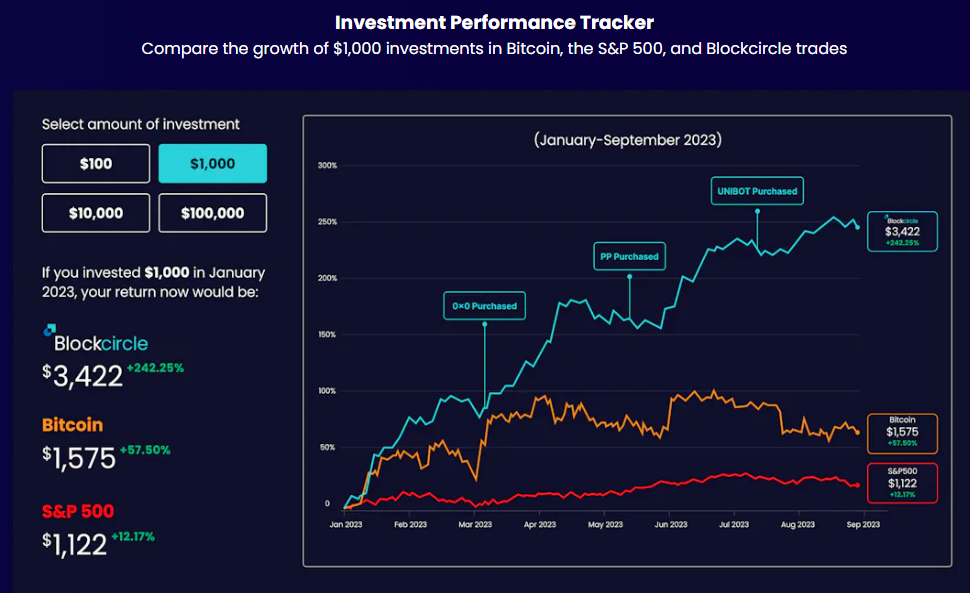Risk Management For Cryptocurrency Traders
Defining risk management and its importance
Risk management is the process through which investors identify, assess and manage the potential risks associated with a particular trade. This process is instrumental to the success of any investor and this is particularly the case for the cryptocurrency market due to its volatility and constant uncertainty. While it is impossible to ever completely minimize the risk of trading on this market, there are a number of key aspects to managing this risk and ensuring that you can be a smart and profitable investor. If you are a visual learner we cover all this on the Blockcircle trading course with easy to follow video tutorials and an active community supporting you every step of the way. Start your free training here.
1. Evaluating the risk: Reward ratio versus win rate
The reward ratio versus win rate strategy can help an investor determine if a trade is a risk worth taking. If a trade has a low reward ratio and low win rating then it is reasonable to conclude that the trade is not worth doing. If a trade has a high reward ration and a low win rate or a low reward ratio and a high reward rate, then it is likely a profitable trading opportunity. Finally, the most advantageous trades occur when there is both a high reward ratio and a high win rate. These trades are likely to turn a significant profit for the investor as there is a low risk associated with the trade and a significant change of a positive outcome.
2. Forming a risk management plan
To develop a successful risk management plan, an investor needs to undertake technical and fundamental analysis to determine the success of a trade. After this analysis has been conducted, you will then be able to use the reward ratio versus the win rate to evaluate the trade and determine if the risk is worth taking. Once you have decided to enter a trade, a risk management strategy should be developed whereby you plan the actions for the trade. This includes the following:
i. Entry, exit, and stop losses
Consult fundamental or technical indicators to determine the best point at which to enter and exit the trade
If you miss your predetermined entry point into a trade it is vital that you never try and chase the trade. This will only ever lead to you making a very risky investment which will more than likely result in a loss
ii. Execution
Some traders are great at analyzing the market however are poor at executing any trades or investments, often due to fear of making a loss. Failing to enter the market will never enable you to turn a profit so be brave, take the risk and enter the market
iii. Trading Size
Before entering the market, it is necessary to decide the size of your trade. This can be hard so for beginners, it might be a good idea to set a fixed percentage on every trade or coin.
3. Managing greed
It is important that once you have developed a risk management strategy you do not deviate from it after entering a trade. It can be hard not to trade when the price of your coin is increasing, these emotionally driven decisions will result in risky, less profitable trades. It is advised that investors do not follow the price changes of the trade very closely, as this will make you more inclined to make trading decisions based on emotion. The best way to guarantee a successful trade is to be calculated and adhere to your risk management.
4. Never fully exit a coin
It is recommended that you never fully withdraw all of your investments in a coin. While this may seem like a good idea, it is suggested that instead, you leave a minimum of 10-15% of your investments in a coin. This will enable you to still have a stake in a particular coin if at some point the market picks up.
5. Never go all in
No matter how promising a particular trade or investment opportunity appears, it is wise to never invest all of your money in one place. The volatility of the cryptocurrency market means that any trade, even a seemingly perfect trade, can collapse and result in a significant loss. A successful investor will have assets across a number of coins. It is recommended that you look at investing in 5 or more different coins. However, it is important to not invest in more coins than market s that you can closely analyse and monitor as poorly researched trades will likely result in losses.
6. Evaluating your risk management strategy
In order to analyze the success of your risk management strategy, it is important to analyse the outcomes of your trades. It is only doing this that you will be able to amend and improve your risk management for future trades.
i. Breaking even
Breaking even on a trade is an indication that your risk management strategy is working effectively. However, it is also evidence that you may be becoming too risk-averse in your investments. It is important to downsize your risk on a trade, however, this should not compromise the possibility of you generating a significant gain.
ii. Small profits
If trades are generating small gains then this is evidence that your risk management strategy is working effectively. However, it is also an indication that you are not allowing your trades to run their course and achieve a higher profit. This is characterized by emotionally driven responses to changes in the market resulting in you closing trades too early or using low targets. These decisions are often emotionally driven and it can take consistent small wins before an investor realizes that this approach is impeding their ability to make large profits.
iii. Large profits
Turning large profits means that your risk management strategy has been almost perfected. The majority of trades will result in big wins, largely due to the investor having developed trading sizes appropriate to the risk. You will also likely close the majority of trades at predetermined points while allowing others to run their course to significant profits. Establishing such a well-defined risk management strategy can take time but remember that making trades the break-even, turn small profits or even result in small loses will give you the experience you need to become a better trader.
Be brave and trade
Finally, it can be tempting to use a buy and hold strategy where you invest in a coin and do not sell it for an extended period of time. This passive strategy is often tempting to new investors as it is simple and is associated with less risk. However, this approach will never allow you to make any significant profits and is simply zero fun! So, take the risk, be brave and trade.








